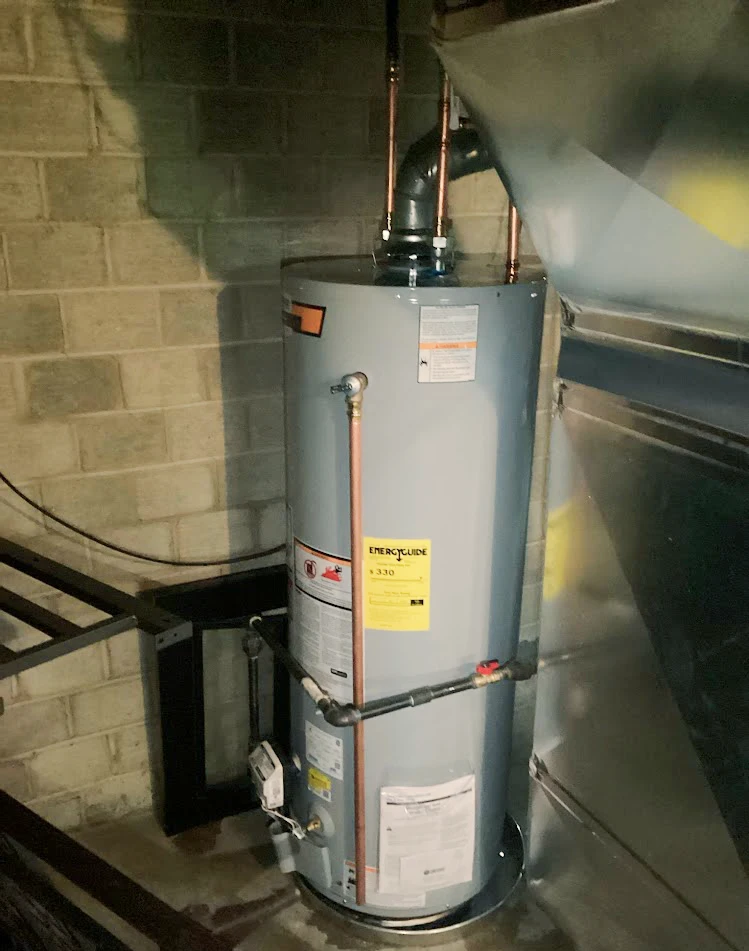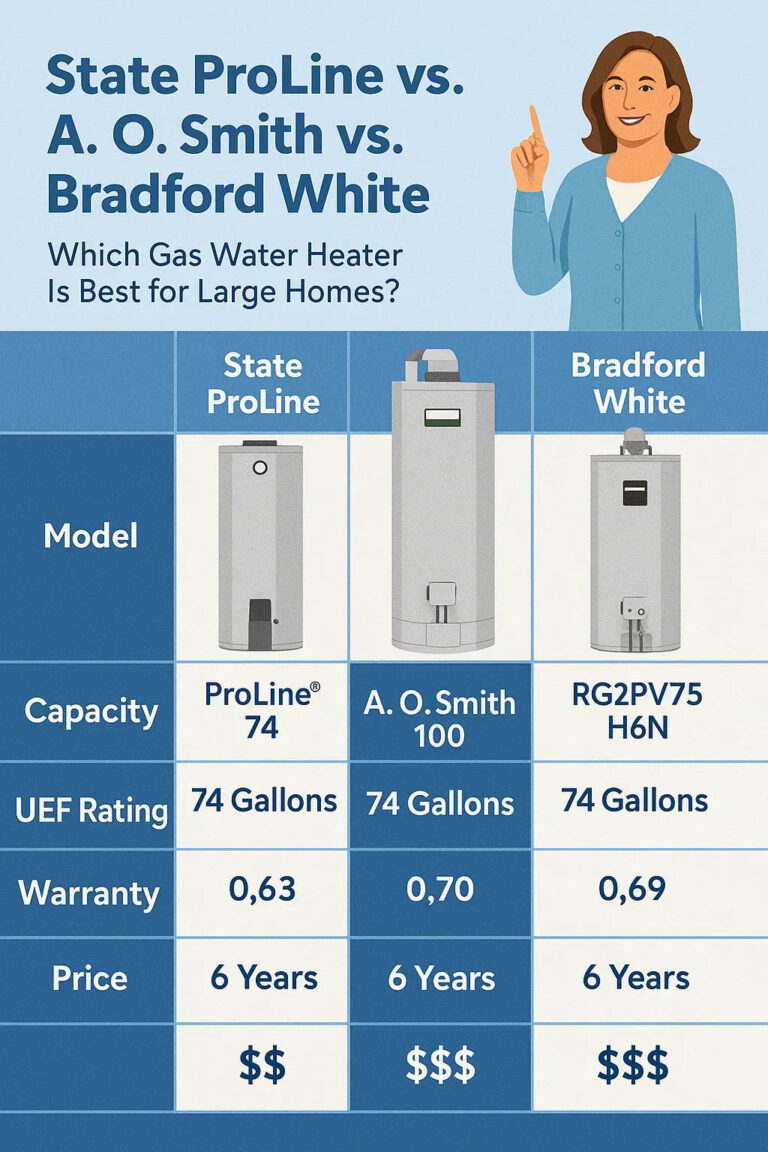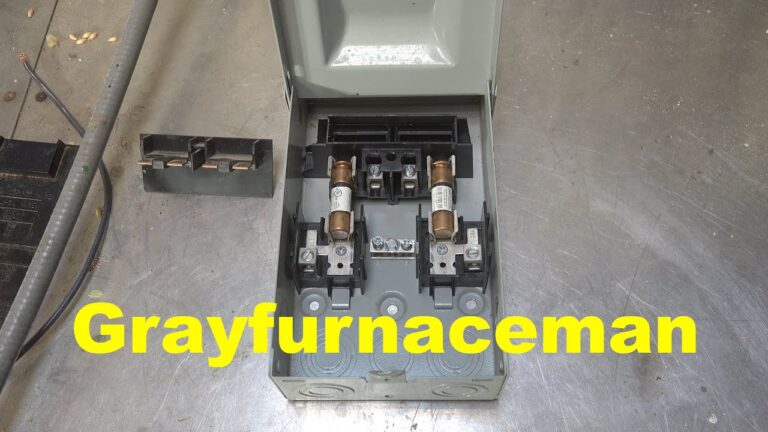Imagine stepping into a hot shower, only to find the water turning lukewarm in seconds. Frustrating, right?
If your water heater insulation gets wet, this could be the culprit behind your less-than-ideal shower experience.
You might be wondering why this happens and, more importantly, what you can do to fix it. Don’t worry, you’re not alone.
Many homeowners face this issue, often without realizing the hidden costs and potential damage involved.
We’ll uncover the reasons why wet insulation can impact your water heater’s efficiency and lifespan. We’ll also provide you with straightforward steps to address the problem and prevent it from happening again.
Stick around, because by the end, you’ll be equipped to tackle this pesky problem head-on, ensuring your showers stay perfectly warm and your energy bills stay low.
Causes Of Wet Insulation
Water heater insulation plays a vital role in energy efficiency. Wet insulation can reduce its effectiveness and lead to costly repairs.
Understanding why insulation gets wet helps to prevent future issues. Three primary causes are leakage, condensation, and environmental factors.
#1: Leakage Issues
Leaks can occur in water heaters, causing insulation to get wet. A worn-out valve or a damaged tank often leads to leaks.
Regularly check for signs of drips or puddles near the heater. Fixing leaks quickly prevents insulation damage.
#2: Condensation Problems
Condensation is a common cause of wet insulation. When warm air meets cold surfaces, moisture forms.
Water heaters can create this condition easily. Inadequate ventilation can worsen condensation. Ensure proper airflow to minimize moisture build-up.
#3: Environmental Factors
Environmental conditions also affect insulation. High humidity levels can cause insulation to absorb moisture.
Basements and damp areas are prone to this issue. Use dehumidifiers to maintain a dry environment. Proper placement of the water heater is crucial.
Potential Risks
Wet water heater insulation can cause damage and reduce efficiency. Addressing damp insulation quickly prevents mold and corrosion. Ensuring proper ventilation helps maintain safety and functionality.
Water heater insulation is essential for maintaining energy efficiency and preventing heat loss. However, when it gets wet, it can pose several risks that might affect the performance of your water heater and even the safety of your home.
Let’s dive into the potential risks you might face if your water heater insulation becomes saturated.
Reduced Efficiency
When insulation gets wet, its thermal resistance significantly drops. This means your water heater has to work harder to maintain the desired temperature.
You may notice a spike in your energy bills as a result. Have you ever experienced a sudden increase in energy costs without a clear reason?
Your water heater’s insulation might be to blame. Wet insulation loses its ability to trap heat, leading to longer heating times.
Mold Growth
Moisture is a breeding ground for mold, which can grow quickly on wet insulation. Mold not only damages your water heater but can also pose health risks to you and your family.
Imagine noticing a musty odor in your home and discovering mold growing behind your water heater.
This is a common scenario when insulation stays wet for too long. Addressing mold growth promptly is crucial to maintaining a healthy living environment.
Structural Damage
Wet insulation can lead to structural damage over time. The added weight and continuous moisture can weaken the structural components of your water heater. Have you checked the area around your water heater lately?
If not, it’s worth taking a look. Wet insulation can cause rust and corrosion, compromising the integrity of your appliance and potentially leading to costly repairs.
By understanding these risks, you can take proactive steps to protect your water heater and your home. Have you ever faced these issues before?
What steps did you take to resolve them? Your experiences could help others navigate similar challenges.
Immediate Actions
Water heater insulation getting wet poses risks. Quick action can prevent damage. Immediate actions are crucial to avoid costly repairs. Address the issue swiftly to ensure your heater functions properly.
Step 1: Shut Off Power
First, turn off the power to the water heater. For electric heaters, switch off the circuit breaker. Gas heaters require shutting off the gas supply.
This step prevents electrical hazards and further damage.
Step 2: Drain The Water Heater
After shutting off power, drain the heater. Connect a hose to the drain valve. Direct water to a suitable drainage area.
Draining helps inspect the heater and assess the water damage.
Step 3: Dry The Surrounding Area

Credit: www.reddit.com
Dry the area around the water heater. Use towels or a mop to remove excess water. Fans can help circulate air, speeding up drying.
Ensure no moisture remains to prevent mold growth.
Assessing Damage
Wet insulation around your water heater can lead to inefficiency and potential damage. First, turn off the water and power supply for safety. Then, check the insulation for mold or deterioration before replacing or drying it thoroughly to prevent further complications.
When your water heater insulation gets wet, it can lead to a host of problems if not addressed promptly.
Ignoring the issue may result in inefficient heating or even mold growth. It’s important to assess the damage effectively to prevent any long-term issues.
Check Insulation Condition
Begin by examining the insulation around your water heater. Is it soggy, or is there just a damp spot? If it’s soaked, it’s time for action.
Wet insulation loses its ability to keep heat in, making your water heater work harder. Peel back any removable layers to get a closer look.
If you find it in poor shape, you should replace it. This simple step can save energy and extend your water heater’s life.
Inspect For Mold
Mold can be sneaky and harmful. Check for any signs of mold growth on or around the insulation. Do you notice any musty smells or discolored patches?
These are tell-tale signs that mold might be present. Mold not only damages your heater but also poses health risks.
Consider using a flashlight to inspect hard-to-see areas. If you detect mold, it’s crucial to clean it up immediately or consult a professional.
Evaluate Electrical Components
Water and electricity do not mix well. Examine all electrical components of your water heater for moisture exposure.
Are there any visible signs of corrosion or rust? Ensure that all wires and connections are dry and intact. Electrical issues can lead to more severe problems or even safety hazards.
If you’re unsure, it’s wise to contact a qualified technician to assess the situation. Taking the time to assess the damage when your water heater insulation gets wet can prevent bigger headaches down the road.
How will you address these issues before they escalate? Your proactive steps can keep your home safe and your water heater running efficiently.
Repair And Replace Options
Water heater insulation getting wet can lead to energy inefficiency and potential damage. Dry the insulation thoroughly or consider replacing it to ensure optimal performance and prevent mold growth.
Regular inspections help in deciding whether repair or replacement is necessary for maintaining a safe, efficient water heater.
Dealing with wet water heater insulation can be a bit daunting, but understanding the right repair and replace options can make the process smoother.
Whether you’re looking to replace the insulation entirely, seeking professional repair services, or considering a DIY fix, each option comes with its own set of benefits and challenges. Let’s dive into each one to help you make an informed decision.
Replacing Insulation
If your water heater’s insulation is completely soaked, replacing it might be the best option. Why? Because wet insulation loses its effectiveness, which can lead to increased energy bills. Begin by assessing the damage.
Is the insulation moldy or has it lost its shape? If yes, it’s time for a replacement. You can purchase insulation blankets from your local hardware store. They’re designed specifically for water heaters and are quite easy to install.
Tip: Make sure you choose insulation with a high R-value for better efficiency.
Professional Repair Services
Sometimes, the damage might be beyond what you can handle on your own. Consider: Have you ever tried fixing something, only to make it worse? If so, professional repair services might be your best bet.
Professionals have the tools and expertise to repair or replace insulation without causing further damage to your water heater. They can also check for any other issues that might have led to the wet insulation in the first place. Question: How much time and money are you willing to invest in fixing the insulation yourself?
Diy Fixes
Feeling adventurous? If you’re comfortable with basic home repairs, a DIY fix could be an exciting challenge. First, ensure you have the necessary tools and materials. Start by carefully removing the wet insulation.
Don’t rush, take your time to avoid damaging the heater. Once removed, dry the area thoroughly before adding new insulation. For those who enjoy a bit of crafting, using aluminum foil or bubble wrap can be a temporary fix until you get proper insulation.
Remember: This is just a short-term solution.
Insight: Tackling DIY projects not only saves money but also gives you a sense of achievement.
However, always weigh the risks and benefits before proceeding. In the end, choosing the right repair and replace option depends on your comfort level and the extent of the damage.
Whether you opt for professional services or decide to take the DIY route, ensuring your water heater’s insulation is dry and efficient is crucial for maintaining its performance and reducing energy costs.
Preventive Measures
Water heater insulation getting wet can be a frustrating problem. You might wonder how you could have prevented it. Luckily, there are several preventive measures you can take to avoid this issue. By focusing on regular maintenance, installing moisture barriers, and monitoring humidity levels, you can keep your water heater in top condition. Let’s dive into these strategies and see how they can help you.
Regular Maintenance
Regular maintenance is crucial for the longevity of your water heater. You should check for leaks and corrosion periodically. A small crack can lead to bigger problems if not addressed promptly.
Drain the tank at least once a year to remove sediment. Sediment build-up can cause the heater to work harder and increase the risk of leaks. You can also check the anode rod, which prevents rust, and replace it if necessary.
Remember, a stitch in time saves nine. Regular checks might seem tedious, but they help avoid costly repairs in the long run.
Install Moisture Barriers
Moisture barriers can be an effective way to protect your water heater. You can install a water heater pan underneath the unit to catch any leaks. This simple measure can save you from water damage to your floors.
Consider using insulation blankets designed specifically for water heaters. These blankets not only provide insulation but also serve as a moisture barrier. Make sure the blanket fits snugly to prevent any moisture from seeping in.
Have you ever thought about how a simple blanket can protect your investment? It’s an easy solution that offers peace of mind.
Monitor Humidity Levels
Humidity can be a silent enemy to your water heater. High humidity levels can lead to condensation, which can dampen your insulation. You might want to invest in a dehumidifier for your basement or utility room.
Keep an eye on the humidity levels with a hygrometer. An ideal level is between 30-50%. If the numbers go higher, you need to take action.
Ask yourself, how often do you check the humidity levels in your home? A quick glance at a hygrometer can prevent a host of issues.
By incorporating these preventive measures, you can keep your water heater in excellent condition. Regular maintenance, moisture barriers, and humidity control are not just tips but essential practices for a worry-free experience.
When To Call A Professional
If your water heater insulation gets wet, acting promptly is crucial. Sometimes, the situation might need expert attention. Knowing when to call a professional can save time and prevent further damage. Let’s explore scenarios where professional help is essential.
Complex Repairs
Some water heater issues are too complex for DIY fixes. If the insulation damage affects the heating system, a professional should inspect it. They can identify hidden problems and fix them safely. Attempting these repairs yourself might cause more harm.
Persistent Issues
Repeated insulation problems indicate deeper issues. If wet insulation occurs frequently, it’s time to consult an expert. They can diagnose persistent issues and offer long-term solutions. Ignoring these problems might lead to more serious damage.
Safety Concerns
Wet insulation can pose safety risks, like electrical hazards. Professionals have the right tools and knowledge to handle these safely. If there’s any risk of electric shock, don’t delay. Call a professional to assess and rectify the situation immediately.
Why Does Water Heater Insulation Get Wet?
Water heater insulation can get wet due to leaks or condensation. Leaks from pipes or the tank can cause moisture buildup.
Condensation occurs when warm air contacts cold surfaces. Regular maintenance and inspections can help prevent these issues and keep your insulation dry.
Can Wet Insulation Affect Heater Performance?
Yes, wet insulation can affect heater performance. Moisture reduces insulation effectiveness, leading to heat loss.
This can make your heater work harder and increase energy bills. Drying or replacing wet insulation can restore efficiency and prevent further damage.
How To Dry Wet Water Heater Insulation?
To dry wet insulation, first locate the source of moisture. Fix any leaks or condensation issues. Use fans or dehumidifiers to speed up drying.
If the insulation is severely damaged, consider replacing it for optimal performance and safety.
Is Wet Insulation A Safety Hazard?
Wet insulation can be a safety hazard. Moisture can lead to mold growth, posing health risks. It can also cause electrical issues if near wiring.
Addressing wet insulation promptly ensures safety and prevents potential hazards.



